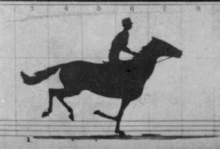Pacack
Super Pac-Fan
- Joined
- Jun 7, 2013
- Messages
- 8,066
- Location
- US (Mountain Time, -7 Hours)
- NNID
- Pacack
- 3DS FC
- 0688-5284-6845
The Sumerian Game (1964)


Imagine that you have just been made Ruler of Lagash, a City-State
of Sumer, in the year 3500 B.C. Twice yearly your Royal Steward,
Urbaba, will report to you the economic condition of the kingdom.
Guided by these reports, you will decide the use of your grain and
other resources, trying to keep your population stable and well fed.
What is The Sumerian Game?
The Sumerian Game (1964) is a text-based video game of land and resource management designed by Mabel Addis and programmed by William McKay for the IBM 7090. Based in the city of Lagash in Sumer around 3500 BC, the player takes the role of three generations of Sumerian rulers - Luduga I, II, and III - and gives commands to their Royal Steward Urbaba regarding management of resources. The game was played by inputting commands into a teleprinter that would output responses from a mainframe computer. Broken up into three sections for each ruler's reign, each section added complexity to the game. During the game's rounds, the player makes decisions like how much food to distribute, store, and plant, and random events can impact the population and harvest. For example, a technological advancement would reduce the likelihood of food spoiling, while a flood would destroy a portion of a season's harvest.
This little-known game was one of the most important video games ever made: it was the first game with characters, the first game with a narrative, the first game with a cutscene, one of the first text-based games, the first strategy game, the first resource-management game, the first city-building game, the first edutainment game, and the first game with a female designer.
The first version of the game was played by a group of thirty sixth-graders in 1964, and a revised version was made in 1966. This revised version was paired with taped audio lectures (which took the form of discussions between the court of advisors) that corresponded with relevant images on a slide projector. Taken together, the game was meant to be a "simulated environment" for learning about the early Sumerian culture.
The Sumerian Game acted as direct inspiration the 1968 game King of Sumeria, which then was expanded upon in 1971 to become the more famous Hamurabi. The latter of these titles inspired several simulation games and helped to establish the genre, despite being less complex than The Sumerian Game which predated it. (As an aside, Hamurabi inspired the 1983 game M.U.L.E., which Shigeru Miyamoto cited as an influence on the Pikmin series. This makes The Sumerian Game the series' great-great grandfather.)
Who are Luduga & Urbaba?
Likely inspired by the real-world rulers of Lugal-dalu and Ur-Baba, Luduga acts as the player character and Urbaba acts as the Royal Steward. The Royal Steward is the role taken on by the computer itself, and everything he says remains in character, even his quizzing:
Strictly speaking, Luduga is the name given to three generations of people who rule over the region of Lagash in Sumer. As Luduga I, the player is responsible for primarily agricultural decisions; as Luduga II, the population and grain levels of the city are adjusted to preset levels, and the player instead directs workers to development of different crafts; as Luduga III, the complexity of the situation increases and the player is given options to trade and expand. While the first section of the game is fairly well documented in Addis' notes, the second and third sections have been mostly lost to time.I lean heavily upon your wisdom, Luduga, but I am also here to help
you. Tell me, if your population is increasing, would you expect the
quantity of grain fed to your people to 1-increase 2-decrease?
1
Of course it should increase. Forgive me if my questions seem
simple. It is my duty to urge you to see the relationship among the
items in your Steward's reports.
Why Should Luduga & Urbaba be in Smash Bros.?
Well...
Frankly, I have no delusions that they should be. However, like The Sumerian Game itself, I figured that there's no harm in using the opportunity to teach others. This game has been largely forgotten. Not only has the source code for the game been lost, but the memory of its existence has faded also, despite its incredible importance to video game history.
It's particularly ironic when one considers that the impetus for the creation of The Sumerian Game was to bring attention in schools to the civilizations of the Mesopotamia region, whose contributions were often forgotten in curriculums that began world history in ancient Greece. Similarly, the impact that The Sumerian Game had on early video game history is often overlooked, and much of the game has been lost to time.
If enough people express interest, I may decide to make a moveset that includes resource management and revolves around Luduga giving directions to Urbaba, who performs the action. It would be difficult, but it could be interesting.
Last edited:


